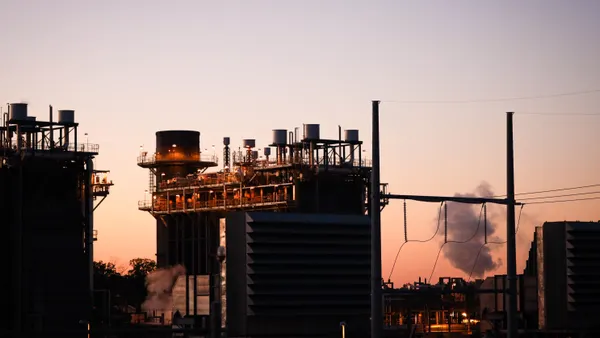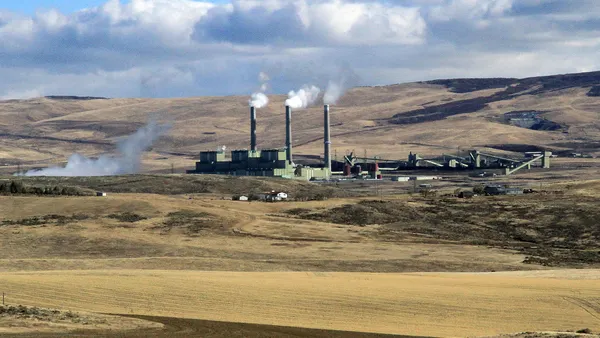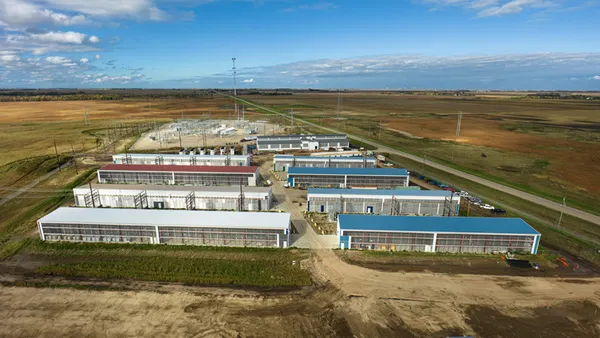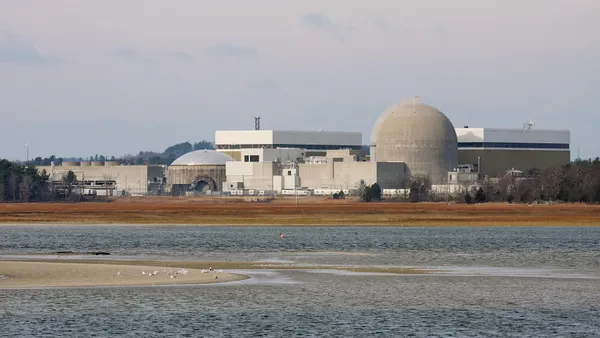Dive Brief:
- Following the first offshore wind lease sale in the Pacific Ocean, project developers will need continued market signals about how California intends to procure offshore wind resources, Bryan Schueler, senior executive vice president and construction business leader of Invenergy – one of the auctions’ provisional winners – told policymakers at a symposium hosted Monday by the California Energy Commission.
- The state will also need to focus on developing ports to support this new offshore wind industry, experts said. “What we’ve seen from Europe and also in the East Coast is that early investment in ports can really attract the supply chain,” Michael Brown, the North American CEO of Ocean Winds, said.
- The Bureau of Ocean Energy Management conducted the Pacific lease sale in December, and five companies emerged as provisional winners after bidding $757.1 million for lease areas that the agency estimates can generate around 4.6 GW of offshore wind energy.
Dive Insight:
The Biden administration is aiming to install 30 GW of offshore wind capacity in the country by 2030, and 15 GW of floating offshore wind by 2035. The lease sale off the Pacific coast resulted in five provisional winners: RWE Offshore Wind Holdings, California North Floating, Equinor Wind US, Central California Offshore Wind and Invenergy California Offshore.
Coming out of the lease auction, developers such as RWE are in the “listening phase” and want to hear feedback from local communities in terms of their priorities in designing a project, Sam Eaton, president and CEO of RWE Offshore Wind Holdings, said at the symposium.
“[T]he more we can listen up front and the more we can build that into our design process up front, the better the project is ultimately going to be,” he added.
At the same time, experts at the symposium said the state needs to put out market signals to provide developers with some certainty in the market.
“We’ve just hit the tip of the iceberg with a significant capital investment to enter into a lease, and that’s really a long-term development and we do need continued market signals… there has to be revenue at some point to return the investment,” Schueler said.
This includes having a procurement program in place for offshore wind, “so that we have something to look to,” he said.
California Assemblymember Jim Wood, D, agreed that the development community needs certainty as the state looks to build out its offshore wind industry. This will involve collaboration among state agencies, he said.
“What I’m sensing is an urgency here, and that’s really important for us… Government doesn’t always move quickly, and I think we as government need to show the same urgency,” Wood said.
Given the significant investment that will need to go into developing offshore wind projects, “there needs to be some certainty – we can’t just say, if you build it, we will use it. We need to do more than that,” he said.
Last year, the CEC adopted offshore wind planning goals of between 2 GW and 5 GW by 2030, and 25 GW by 2045 for the state. However, wind energy advocates have noted that the state doesn’t have a clear offtake plan for offshore wind.
Developers also stressed the importance of building out ports. Given California’s goal of bringing up to 5 GW of offshore wind online by 2030, ports will need to be ready by 2026 or 2027 at the latest, Eaton said. Permitting processes for these ports could easily take three or four years, he said.
“That means we have to get started today, and really start moving things into overdrive if we’re going to meet our long-term goals,” he added.
Ports are one of the three fundamental ‘Ps’ for the industry – the other two being procurement and permitting, according to Brown, who also agreed that the state will need to start acting immediately on this issue.
California has begun to take some initial steps. Last year, the CEC approved $10.5 million in funding to renovate a Northern California port to better equip it to handle the development of offshore wind floating platforms. On Tuesday, the Port of Long Beach also released plans to build a facility to support the manufacture and assembly of offshore wind turbines.
Another challenge that California’s nascent offshore wind industry will face is the lack of a robust supply chain in the U.S, according to Molly Morris, head of Equinor’s renewables business in the Americas.
“[T]he offshore wind industry in the U.S. is quite dependent on Europe, on Asia, on other parts of the world to source what we need, and it’s only getting harder as commodity prices are also increasing,” she said.
At the same time, this also presents a huge opportunity for the West Coast, because “building these massive-scale projects should also drive the supply chain growth right here in California,” she said.














